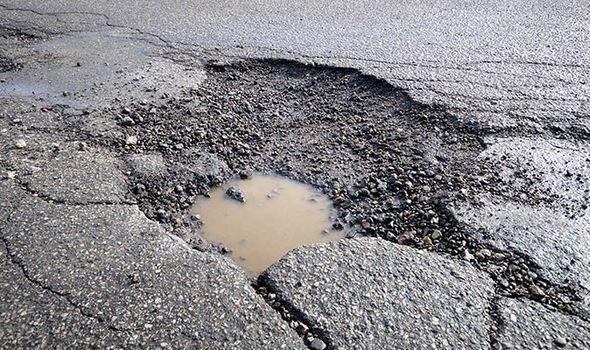Once again, there has been significant comment in social media about the state of our roads. Potholes emerge suddenly and have potential to cause significant damage to vehicles.
Although Council is frequently targeted by these complaints, many of the problem areas on roads are the responsibility of Regional Roads Victoria (RRV), not Council. And regardless of which authority is responsible, road damage is going to occur.
Winter rains have a lot to do with the development of road damage. This year, we have had rainfall well above average. And the Bureau is predicting that La Nina conditions will persist for a third year so we can expect more rain and more potholes.
In general there are two mechanisms for failure of a sealed road – ground water pushing up underneath the seal or water penetrating the seal through a crack. Damage then occurs as a result of “pumping”, which occurs as vehicles drive over the damaged area and slowly wash out fines from the pavement below the seal. This inevitably leads to more damage to the seal.
Roads across the Shire were built at different times, to different standards, on different ground conditions and have different traffic loads. As a result, they all perform differently and some roads are more susceptible to damage than others. Ballan Road near Victoria Park is one section of road that is frequently damaged but Daylesford/Hepburn is no more susceptible than other parts of the Shire. Roads behave differently depending on the underlying soil composition and some are more susceptible to damage than others.
All of Council’s roads are inspected based on their importance in the road network road hierarchy. The inspection regime and the Council response to managing any defects identified are outlined in Council’s Road Management Plan (RMP) . Council spends around $1.5 million per year on road reconstructions, which is a complete rebuild of a road, in addition to their maintenance programs. The RMP was updated in June, 2021.
All arterial roads are managed by RRV including where they traverse townships. Other roads are controlled by Council. A list of Council roads can be found in the Hepburn Shire Road Register.
The road authorities cannot usually be held responsible for vehicle damage resulting from road conditions unless they have breeched their responsibilities under the RMP. For example, the RMP identifies the maximum response time for potholes in excess of 300mm diameter or 75mm depth as two weeks for sealed roads classified as Link or Collector roads and four weeks for Local Access roads. If repairs are not undertaken with the specified timeframes, the Council might be deemed to have breached its duties.
Although Council roads are regularly inspected according to the RMP, Council welcomes feedback from regular road users which assists in managing maintenance programs. You can call Customer Service or lodge a Customer Request on the Council Website. The Council response will depend on the extent and cause of the damage. In most cases, Council responds within the timelines set out in the RMP.
Although road users are encouraged to report RRV problems directly, where customers report RRV defects to Council they will be forwarded to RRV.
An alternative which may be more convenient to road users is the SnapSendSolve app. You can take a photo of damage to any public infrastructure and send it to the appropriate authority. Geolocation information in the photo can be used to direct the response. An advantage of SnapSendSolve is that you don’t have to wait until you get home to your computer to use it, a delay that often results in the issue not being reported. Another advantage is that information about damage can quickly be directed to the appropriate authority if the person reporting damage is not sure about who is responsible.





